Last week, the SBA and the Department of the Treasury debuted two new applications for having Paycheck Protection Program Loans forgiven. One, dubbed the “borrower-friendly” version, accounts for changes made to the program through the PPP Flexibility Act signed into law by President Trump on June 5. This new version of the forgiveness application asks borrowers to confirm that at least 60% of their funds were spent on payroll; this is down from the original 75% requirement.
A second form, 3508EZ, can be used by:
- Self-employed borrowers who have no employees
- Employers who did not cut pay by more than 25% and did not reduce head count or hours
- Borrowers who experienced a drop in business activity due to health directives related to COVID-19 and did not cut employees’ pay by more than 25%
For businesses that received PPP Loans prior to June 5, both of the new applications allow the option of calculating forgiveness based on the original eight-week covered period for spending the funds, or the extended 24-week period.
SBA Reopens EIDL and EIDL Advance Program
The U.S. Small Business Administration (“SBA”) has reopened the Economic Injury Disaster Loan (“EIDL”) and EIDL Advance program to all small businesses. The program had been closed to most new applicants for more than a month. The loans, capped at $150,000, can be used to pay debts, payroll and other bills — including items not covered in the separate but popular $649 billion Paycheck Protection Program (“PPP”). The disaster loans are offered at a 3.75% interest rate for businesses and 2.75% interest rate for nonprofits
In addition, small businesses and nonprofits may request, as part of their loan application, an EIDL advance of up to $10,000. The advance does not have to be repaid, and applicants may receive an advance even if they are not approved for a loan. While the loans call for repayment, the cash advances need not be repaid, even for applicants who ultimately do not receive a loan.


